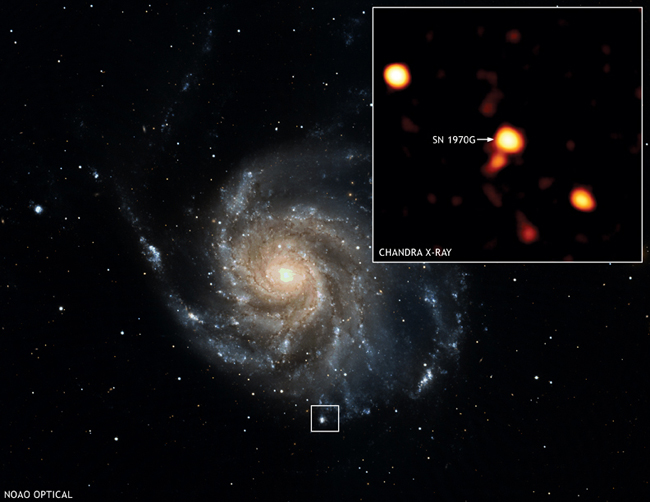SN 1970G: A supernova in the galaxy M101, 22 million light years from Earth.
Caption: Chandra's image (inset) shows X-rays from a supernova that was observed to occur 35 years ago. The bright cloud in the box in the optical image is not related to the supernova, which is located immediately to the upper right (arrow) of the cloud. Before a massive star explodes as a supernova, it loses gas in a stellar wind that creates a circumstellar gas shell around the star. The explosion generates shock waves that rush through this gas and heat it to millions of degrees. The X-rays from SN 1970G are likely due to this process. Astronomers estimate that in another 20 to 60 years the shock waves will have traversed the shell and encountered the interstellar medium. At this time SN 1970G will make the transition to the supernova remnant phase of its evolution.
Scale: Chandra Inset is 5.5 arcmin across.
Chandra X-ray Observatory ACIS Image
|


